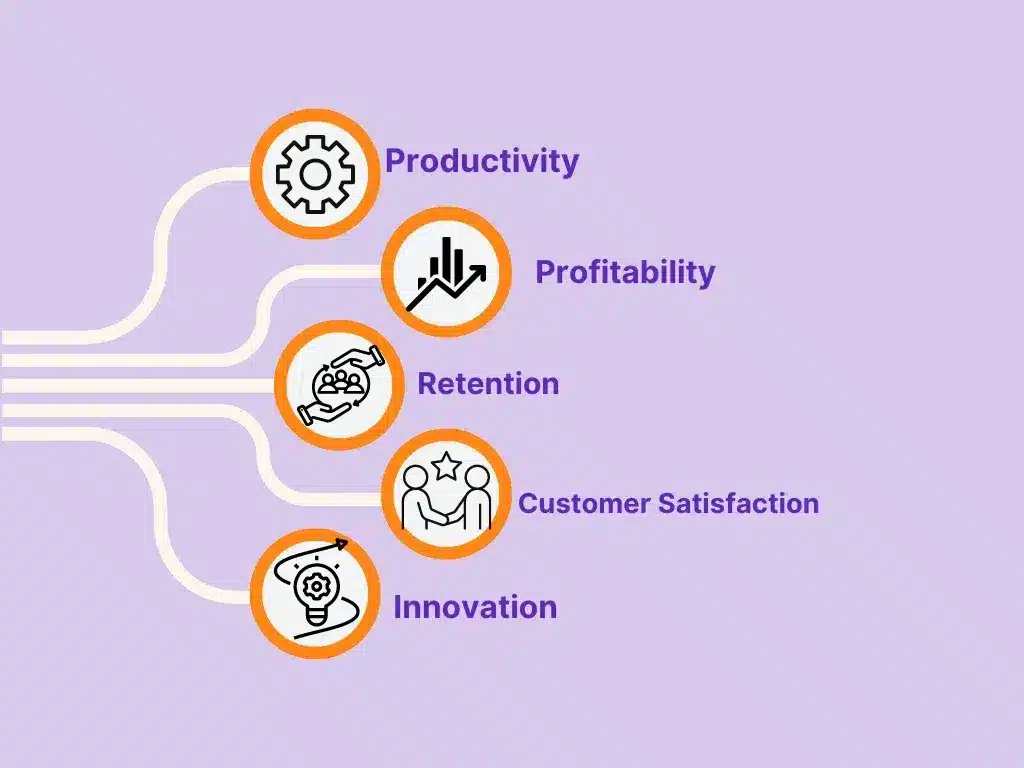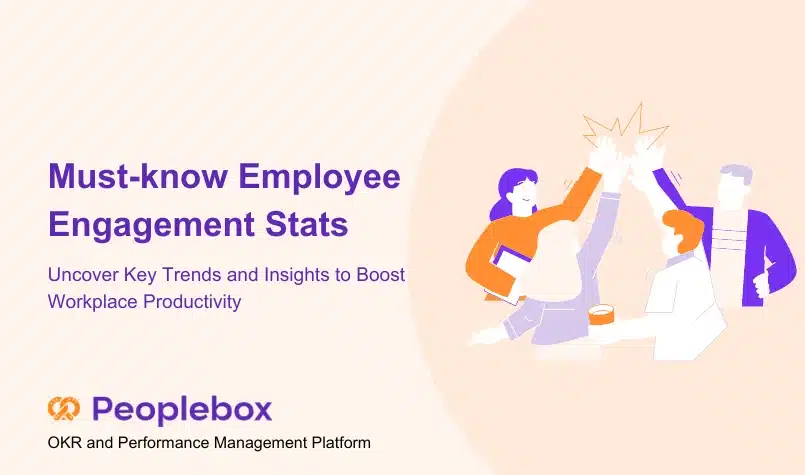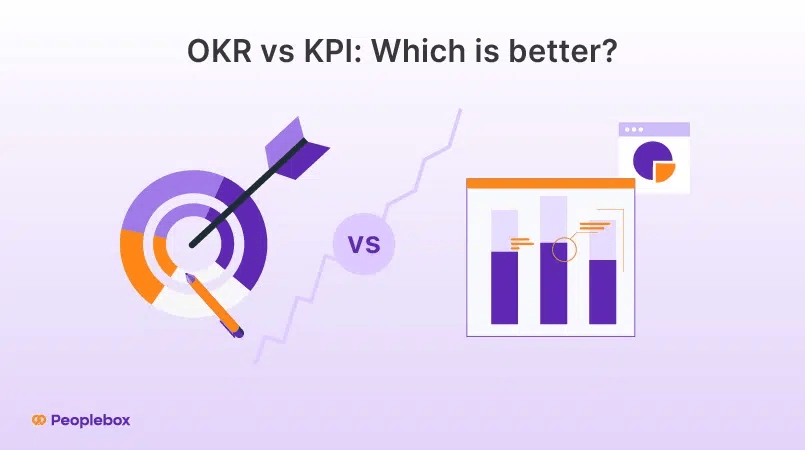The era of “great resignation” is upon us. Salary is not enough to hold employees in their positions. Employees quit left, right and center if they don’t feel engaged at work.
This isn’t speculation. A staggering 56% of employees look to change their jobs in the next year. To retain your employees, you need to focus on employee engagement.
As per Harvard Business Review, engaged employees perform better, experience less burnout, and stay in organizations longer. This is just one of many studies highlighting the importance of employee engagement.
Several more statistics prove why you need to get started with employee engagement right away. This blog will help you understand employee engagement and why you need it, with several statistics as proof.
Let’s dive in.
What is Employee Engagement?
Employee engagement refers to the level of an employee’s emotional commitment and involvement with their organization. It’s about how connected your employees feel to their work, their team, and the company’s goals.
Engaged employees are more passionate about their jobs and are motivated to contribute to the company’s success. This engagement is driven by factors such as meaningful work, growth opportunities, recognition, and a supportive work environment.
By using tools like Peoplebox’s employee engagement platform, organizations can better understand and enhance engagement levels through continuous feedback and insights.
Why does employee engagement matter?
Latest employee engagement statistics show that engaged employees can directly influence an organization’s performance. They are enthusiastic about their work, leading to positive outcomes for them and your company. Here’s why employee engagement matters:

- Productivity: Engaged employees are sign ificantly more productive, improving overall performance and output.
- Profitability: Organizations with high employee engagement see substantial improvements in profitability, often as much as a 21% increase.
- Retention: High engagement levels reduce turnover, which helps retain top talent and reduce recruitment and training costs.
- Customer Satisfaction: Engaged employees provide better customer service, which enhances customer satisfaction and loyalty.
- Innovation: When engaged, employees are more likely to be creative and contribute innovative ideas that drive the company forward.
Understanding and fostering employee engagement can transform a workplace. For example, providing constructive feedback or utilizing tools for 360-degree feedback can provide invaluable insights into employee morale and areas for improvement.
These practices ensure that employees feel heard and valued, which is crucial for maintaining high levels of engagement.
Now, let’s dive into some key statistics on employee engagement to understand its current landscape better.
Latest Employee Engagement Statistics Roundup
Here are some recent employee engagement statistics that will prove the importance of employee engagement for your organization:
Latest employee engagement statistics for General Employee Engagement
- Global Engagement: Only 21% of employees globally are engaged at work (Gallup, 2023)
- Cost of Disengagement: Worker attrition and disengagement cost median S&P 500 companies about $282 million annually (McKinsey, 2023)
- Engagement Trend: Employee engagement in the U.S. peaked at 40% in mid-2020 and has since decreased (Gallup, 2024) Source.
- Burnout and Engagement: Burnout is a significant issue, with 41% of employees reporting high levels of stress (Forbes, 2022)
- Engagement by Role: Senior leaders report higher engagement levels than frontline workers (McKinsey, 2024)
- Manager Influence: 70% of the variance in team engagement is attributable to the manager (Gallup, 2020)
- Global Disengagement: 19% of employees globally are actively disengaged, leading to significant productivity losses (Gallup, 2023)
- Remote Work Engagement: 56% of remote workers report higher engagement due to better work-life balance (McKinsey, 2022)
- Diversity Impact: Inclusive workplaces see 12% higher engagement rates (McKinsey, 2024)
- Recognition Importance: Regular recognition increases engagement by 23% (Forbes, 2022)
Latest employee engagement statistics for impact on productivity
- Productivity Loss: Disengaged employees contribute to $7.8 trillion in lost productivity globally each year (Gallup, 2023)
- High Engagement Benefits: Teams with high employee engagement experience a 23% higher profitability (Harvard Business Review, 2021)
- Low Turnover: Highly engaged teams see 59% lower turnover in high-turnover organizations (Gallup, 2020)
- Quality and Defects: Highly engaged teams experience 41% lower absenteeism and 40% fewer quality defects (Gallup, 2020)
- Customer Metrics: Businesses with highly engaged employees see a 10% increase in customer ratings. (Gallup, 2020)
- Sales Impact: High engagement correlates with a 20% increase in sales (Gallup, 2020)
- Safety Incidents: Highly engaged business units experience a 70% decrease in safety incidents (Gallup, 2020)
- Retention Rates: Engaged employees are 87% less likely to leave their organizations (Harvard Business Review, 2021)
- Operational Efficiency: Companies with high engagement report 21% greater productivity (Harvard Business Review, 2021)
- Innovation: Engaged employees are 57% more effective in their roles and 87% less likely to leave their companies (Gallup, 2020)
Latest employee engagement statistics for employee wellbeing
- Work-life balance: 53% of employees say work-life balance is very important for their engagement (McKinsey, 2022)
- Wellbeing Programs: Companies with wellbeing programs see a 20% increase in employee satisfaction (Gallup, 2020)
- Mental Health Impact: 76% of employees say their employer should support mental health (Forbes, 2022)
- Burnout Rates: 50% of workers report feeling burned out at least sometimes (Gallup, 2021)
- Employee Support: 87% of employees expect their employer to support work-life balance (McKinsey, 2022)
- Engagement and Wellbeing: 38% of engaged employees have thriving well-being compared to 8% of actively disengaged employees (Gallup, 2021)
- Workplace Stress: 44% of employees experience workplace stress, impacting engagement (Gallup, 2021
- Flexibility Importance: 77% of employees say flexible work options are crucial for engagement (Forbes, 2022)
- Health Programs: Companies offering health programs see a 22% increase in employee engagement (Gallup, 2020)
- Remote Work Benefits: 56% of remote workers report higher engagement due to better work-life balance (McKinsey, 2022).
Latest employee engagement statistics for managerial influence on employee engagement
- Feedback Frequency: Employees who receive daily feedback are three times more likely to be engaged (Gallup, 2020)
- Manager Training: 58% of managers report needing more training in people management (Gallup, 2020)
- Leadership Style: Managers with a coaching style boost engagement by 25% (Harvard Business Review, 2021) Source.
- Recognition by Managers: 72% of employees say recognition from their manager has the most impact on their engagement (McKinsey, 2024) Source.
- Trust in Leadership: Employees who trust their managers are 5 times more likely to be engaged (Forbes, 2022)
- Effective Communication: Teams with high levels of managerial communication report 34% higher engagement (Harvard Business Review, 2021) Source.
- Involvement in Decision-Making: When employees are involved in decision-making, engagement levels are 25% higher (Forbes, 2022)
- Leadership Training Programs: Organizations with formal leadership training programs see 29% higher employee engagement (McKinsey, 2023) Source.
- Clear Expectations: 50% of employees say the clarity of expectations is a key factor in their engagement (Gallup, 2021)
- Weekly Conversations: Managers having one meaningful conversation per week with each team member is crucial for high-performance relationships (Gallup, 2024)
Latest employee engagement statistics for employee development and growth
- Learning Opportunities: 80% of employees feel more engaged with learning and development opportunities (LinkedIn Learning, 2023)
- Career Development: 94% of employees would stay at a company longer if it invested in their career development (LinkedIn Learning, 2023)
- Skills Training: Companies offering comprehensive training programs see 218% higher income per employee (McKinsey, 2024)
- Employee Development: Employees with access to career development programs are 15% more engaged (Forbes, 2022) Source.
- Growth Opportunities: Lack of growth opportunities is why employees leave their jobs (Harvard Business Review, 2021
- On-the-Job Training: 70% of employees report higher engagement levels with on-the-job training (LinkedIn Learning, 2023)
- Mentorship Programs: Employees in mentorship programs are 45% more engaged (Forbes, 2022) Source.
- Skill Development: Continuous skill development increases employee engagement by 32% (LinkedIn Learning, 2023)
- Promotion Opportunities: 37% of employees cite a lack of promotion opportunities as a reason for disengagement (Harvard Business Review, 2021) Source
- Career Path Clarity: Clear career paths boost employee engagement by 20% (McKinsey, 2024)
Latest employee engagement statistics for employee recognition and reward
- Recognition Frequency: Employees who receive recognition at least once a week are 2.7 times more likely to be engaged (Gallup, 2021)
- Reward Programs: Companies with effective reward programs see a 31% reduction in turnover (Harvard Business Review, 2021)
- Peer Recognition: Peer recognition programs increase engagement by 35% (Forbes, 2022)
- Incentive Programs: Employees with access to incentive programs are 26% more engaged (LinkedIn Learning, 2023)
- Recognition Platforms: Digital recognition platforms boost engagement by 30% (McKinsey, 2024)
- Celebration of Milestones: Celebrating employee milestones increases engagement by 22% (Forbes, 2022) Source.
- Financial Rewards: 44% of employees say financial rewards are the most important form of recognition (Harvard Business Review, 2021)
- Non-Financial Rewards: Non-financial recognition (e.g., public acknowledgement) increases engagement by 29% (McKinsey, 2024)
- Immediate Recognition: Immediate recognition of achievements leads to a 25% increase in engagement (Gallup, 2021) Source.
- Recognition from Leadership: Recognition from senior leaders boosts engagement by 28% (Forbes, 2022) Source.
Latest employee engagement statistics for workplace culture and environment
- Inclusive Culture: Inclusive workplaces see a 12% higher engagement rate (McKinsey, 2024)
- Team Collaboration: 73% of employees who work in collaborative environments are more engaged (Harvard Business Review, 2021)
- Open Communication: Open communication within teams increases engagement by 25% (Forbes, 2022) Source.
- Supportive Environment: A supportive work environment leads to a 29% increase in engagement (McKinsey, 2024).
- Diverse Teams: Teams with diverse backgrounds are 21% more likely to engage effectively and see a 19% higher revenue (Forbes, 2022) Source.
- Healthy Work-Life Balance: Organizations promoting work-life balance see a 25% increase in employee engagement (Harvard Business Review, 2021)
- Employee Voice: Allowing employees to voice their opinions freely increases engagement by 17% (McKinsey, 2023)
- Workplace Transparency: High levels of workplace transparency correlate with a 30% increase in engagement (Forbes, 2022) Source.
- Purpose-Driven Culture: Companies with a strong sense of purpose report 40% higher levels of employee engagement (Harvard Business Review, 2021)
- Positive Workplace Relationships: Positive colleague relationships increase engagement by 21% (McKinsey, 2024).
Kickstart your Employee Engagement Program with Peoplebox
These latest statistics for employee engagement are proof enough to keep your employees engaged. However, creating a culture of employee engagement is not easy.
It takes intention, investment, and effort over several years. To make the whole process easier, you need an employee engagement tool. The Peoplebox employee engagement platform is perfect for this task.
Peoplebox comes with all the necessary tools to engage your employees. First, you can engage your employees with employee pulse surveys and monitor engagement insights with detailed engagement reports.
Not only this, but you can also schedule 1:1 meetings with employees to provide constructive criticism for those who need special attention.
Peoplebox makes employee engagement so easy that anybody in your organization can engage with anybody. It leads to happier employees and better performance. With so many features, there’s no time to waste. Try Peoplebox for employee engagement today.






